News flash: Businesses need customers to thrive.
This is hardly earth-shattering new information, but sometimes it's good to get back to basics. No matter what kind of business you run, your customer base is the foundation.
So how do you get people in the door and keep them coming back for more?
Let's jump right into the strategies.
1. List One Product as "Sold Out"
This hack is quick and effective. Best of all, you can get it done in just a few minutes.
All you need to do is tweak your online storefront to highlight an item that has sold out. Here's an example:
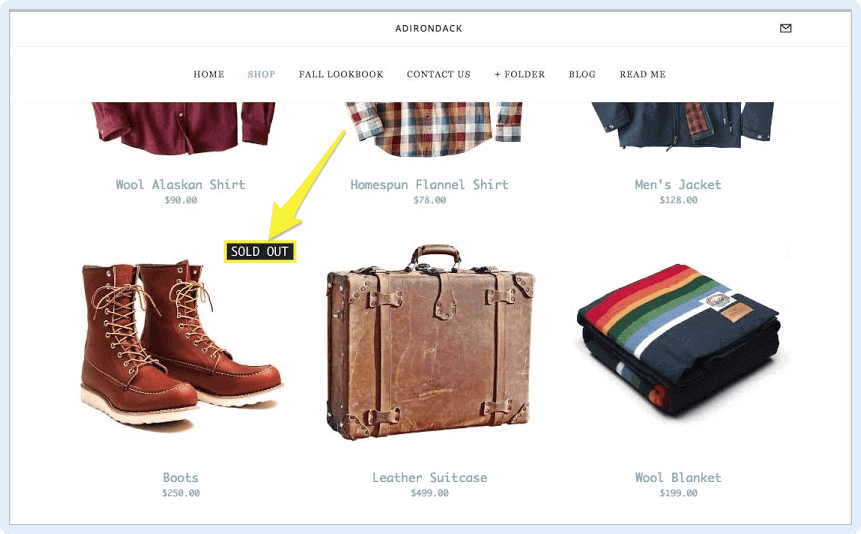
This does two things. First, it lets shoppers know that your products are in high demand. Second, it creates an aura of scarcity around your products.
Like squirrels hoarding acorns for the winter, it's wired into our DNA to want to snap up limited resources while we can. Your customers are more likely to act if they think your items sell out regularly.
2. Build "Alternative to" Landing Pages to Scoop the Competition
If you're a small company with a famous competitor, you can attract the big guy's potential customers with special landing pages.
Here is how a company called ConvertKit attracts customers of MailChimp (one of their competitors).
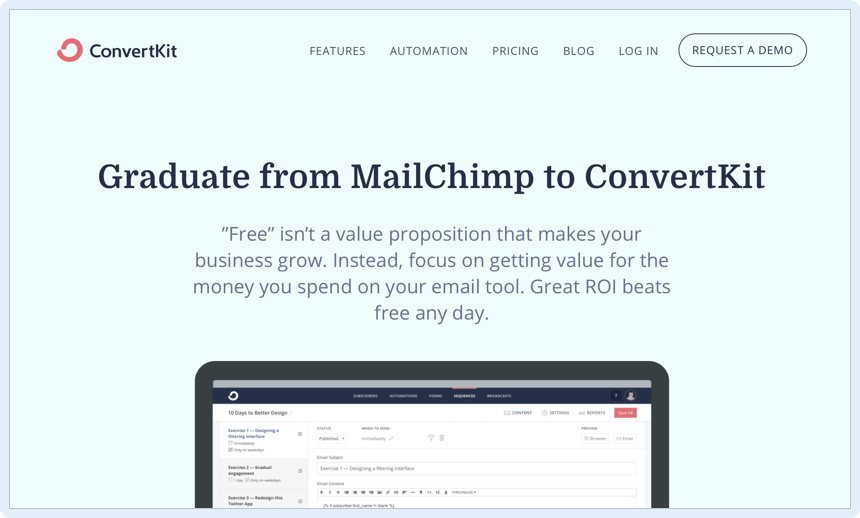
Many people search Google for alternatives to well-known companies to find better pricing or features. Take advantage of comparison shopping by designing landing pages labeled as "Alternative to ___" and touting your wares.
Be sure to get the name of your competitor in the meta data and SEO to attract leads. This seems counterintuitive, but the content of your page will get those customers to choose you instead of your rival.
3. Engage Your Competitors' Unhappy Customers
You can directly target prospects who are unhappy with your competitor's products or service. People love to complain on Twitter and Quora, so search these sites for keywords people are using to find other solutions.

For example, try searching for a competitor's name paired with search terms like "alternatives," "reviews," "problems" and — a perennial favorite — "sucks."
Once you've found some unhappy folks that could benefit from what you offer, you can market directly to them with a simple tweet or a reply to their post.
4. Ask Your Customers One Important Question
There's one question that will get your customers to open up to you like no other:
"What are the three biggest problems you face?"
Asking this question builds a deeper relationship—after all, they're telling you a lot about their lives and their feelings in the answer. It also gets them to think of you as someone who wants to help them and has their best interests in mind. Customer loyalty is key when it comes to growing your business.
5. Create Custom Landing Pages for Unique Customer Segments
Most businesses grow because they have several audiences for their product or service. If you sell t-shirts, you may target both men and women. If you're a contractor, you might market kitchen upgrades to millennials and safety grab bars to empty nesters.
Different audiences need different landing pages!
Here's a live example from our own website:
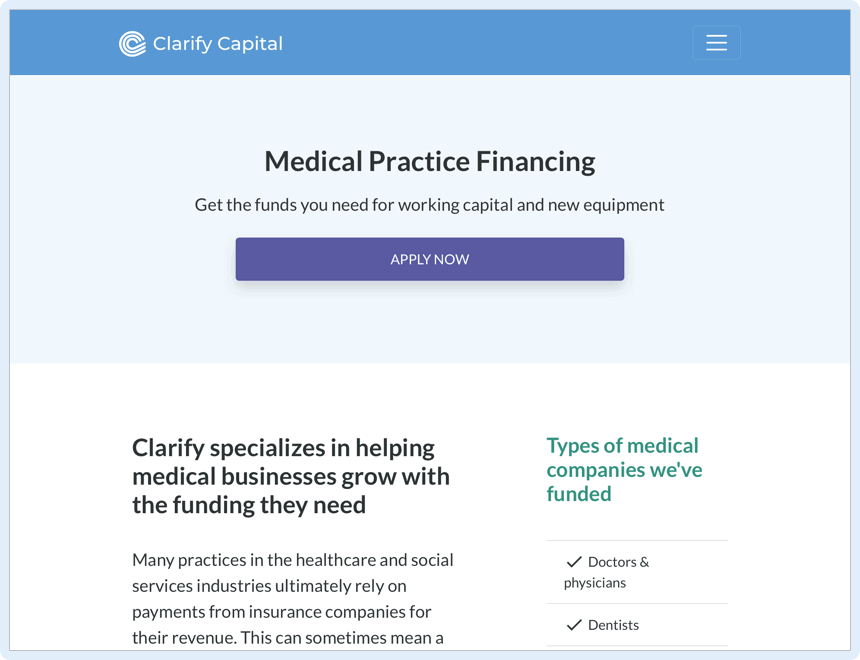
Tailored pages allow you to speak to the unique needs of each customer segment through your headlines, copy and images. Show each segment what they want, and they'll be more likely to buy.
6. Piggyback Your Marketing With Trending News Stories
Is there a viral news story that somehow connects to your industry?
If so, take advantage. Position yourself as the expert in the field and publish some timely blog posts. Newsjacking — leveraging the big news of the moment to feature your brand—gives you the opportunity to put a local spin on a national story.
Here's a great example of how automotive repair company Service King used the trending interest in Pokemon:
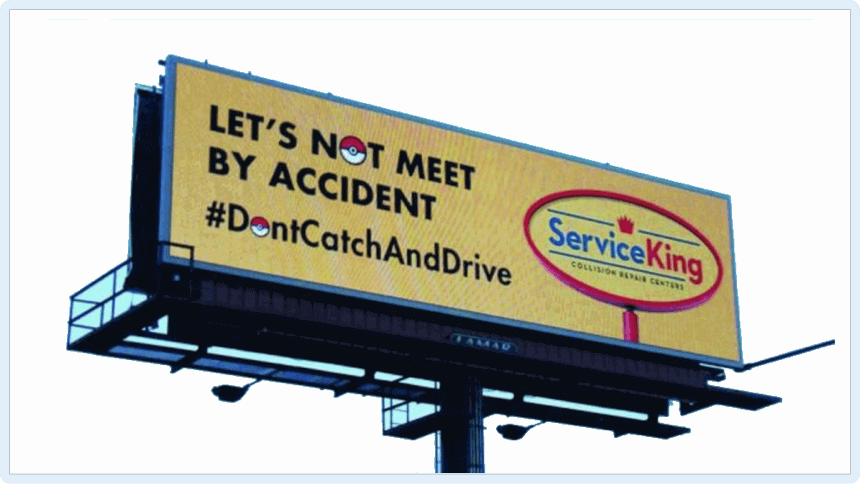
You can also show off your knowledge or get some publicity with your sense of humor as you comment on the next big happening. Just be careful to steer clear of controversial topics and keep your social media humor friendly as you piggyback on viral trends.
7. Test Out Higher Pricing
Strange but true: Higher prices can actually get you better customers.
That's because the people who search for rock-bottom prices aren't selective. On the other hand, customers willing to pay more are likely to be more loyal and engaged.
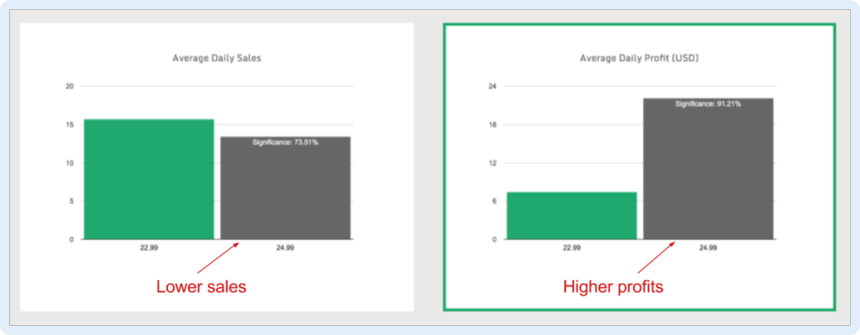
To make this work for you, run an A/B test to see which price point leads to more conversions and repeat customers. Just don't be surprised if the higher price is actually the right price.
8. Try Facebook and Google Retargeting Ads
Do you have a lot of window shoppers visiting your website? If your conversions aren't up to snuff based on your web traffic, retargeting ads could lead to more sales.
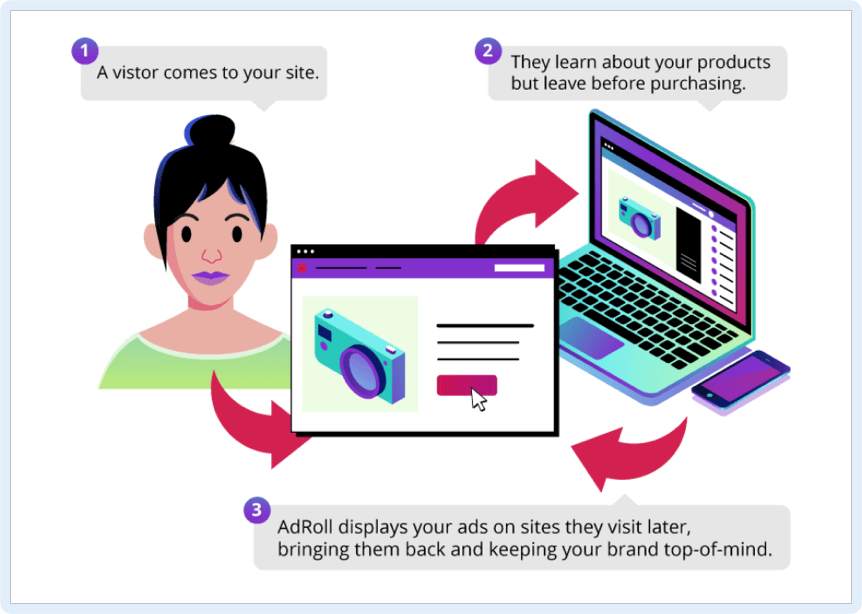
Retargeting works by adding a bit of code on your website that places a cookie in your visitor's browser. These trigger ads for your items to come up on other websites they visit. It's a great way to encourage shoppers to come back for a second look—and a purchase.
Try developing a few retargeting ads to see if they boost your bottom line. If they do, you may want to develop a full retargeting campaign for your business.
9. Give Free Samples to Influencers
Influencer marketing is big business these days. Fortunately, you can hack your way to success without investing in a full contract or media campaign.
Follow these steps to connect with bloggers and social media stars whose followers want what you're selling:
- Identify influencers with the right audience and wide reach. For example, if you're targeting women age 18-35 to sell shoes, look for Instagrammers and fashion bloggers with a similar style to your brands.
- Engage with influencers on social media. Comment on their most recent posts, give them a mention on your social media account, and generally make friends online.
- Reach out for their opinions on your product. Once you've established some contact, private message (PM) the influencer to ask if they'll give some feedback on your newest product — which you'll send them for free.
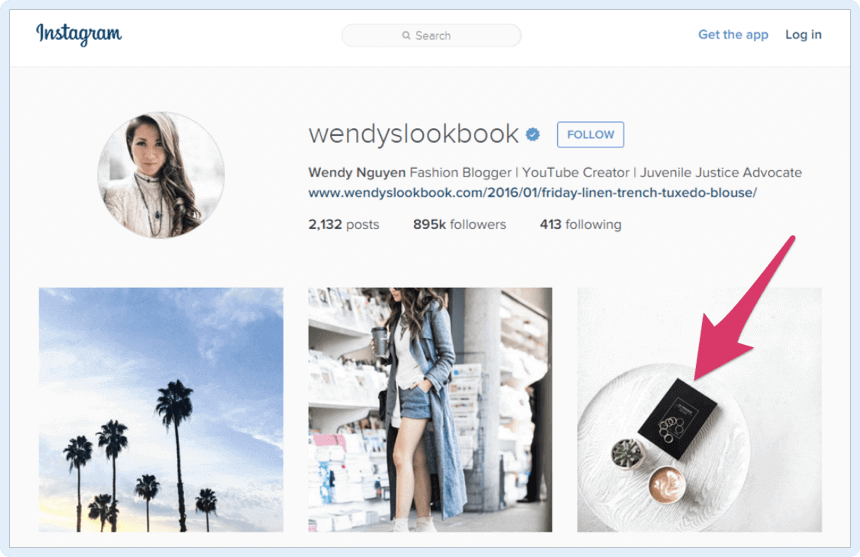
Pro Tip: Keep the conversation natural, and don't ask for a review. Nine times out of 10, the influencer will review your product automatically.
10. Use Exit-Intent Coupons
Unhappy with your bounce rate?
Enter the exit-intent coupon. These pop-ups flash onto the screen to hook them before they navigate away from your site.
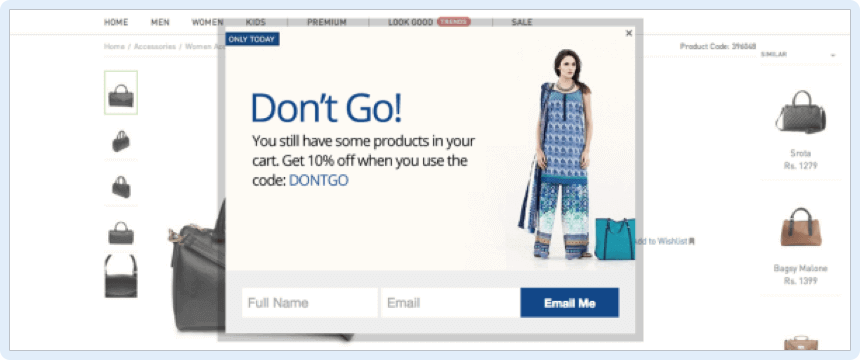
Set your coupons up to ask visitors to sign up for a special discount before they go, and it could be just the thing they need to buy that gateway item right now.
11. Partner With Another Company for Mutually Beneficial Marketing
A marketing partnership with a non-competitor can help both companies reach a wider audience. This type of campaign works when you have a similar customer base and sell complementary rather than competing products.
For example, a bakery might cross-promote with the coffee shop across the street by offering mutual coupons and featuring each other's products. Other partnerships to consider: distributors + brands or services + related products.
Larger companies have been using the co-branded marketing strategy for decades. Here's an example of Taco Bell and Doritos:
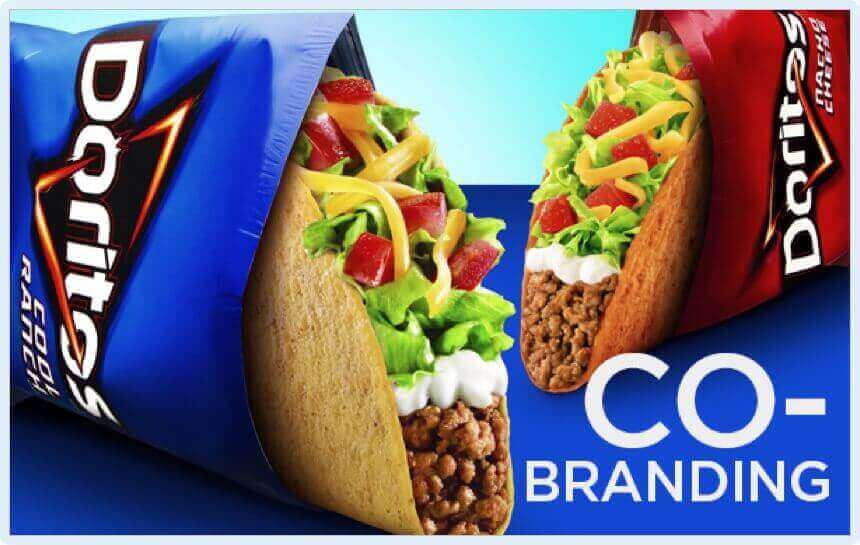
This hack takes some legwork to strike a deal with another business, but the results are worth it as you both succeed in growing your customer base.
12. Ask for Reviews — but Get the Timing Right
Great reviews help build trust for your brand, but you have to know when to ask to maximize the chance of positive feedback.
To make sure your customer is having a great experience, ask for reviews during these crucial moments:
- When you've been able to solve a problem for them
- When they refer a new customer
- When they renew a subscription or make a repeat purchase
- When they give you a shout-out on social media
- When they've genuinely thanked you for your time or service

When you're thoughtful about this process, you can catch customers at the peak of their goodwill to get a stellar review.
13. Reach Out to Journalists Who Cover Your Industry
You can jump-start your PR efforts and bring in more customers by getting the attention of the right journalist. To find your niche, look for people who write about your competitors.

So how do you pitch to a journalist?
First, analyze your competitors' backlinks with a tool like Ahrefs. This will show you who is writing about the competition and what kind of stories they're telling.
Next, it's time to craft a value-driven outreach email that gets journalists' attention. Try offering to collaborate on a piece and offer exclusive research that gives them something unique. That's a win-win for both of you.
14. Give Your Best Advice on YouTube
YouTube ranks sky-high in Google search results for how-to questions, which makes a video tutorial an extremely powerful way to expand your customer base.
It's easy! All you need is your smartphone and a tripod.

Think of this as a mini TED Talk where you solve a problem by giving your best advice in just a few minutes. Add a CTA at the end to bring traffic to your website. When you publish the video, include a detailed description filled with relevant search terms as well as a link to your website.
Pro Tip: Not sure what to talk about? Start by typing your topic into YouTube's search bar and see what autofill suggestions come up. Plan your content around the most popular searches.
15. Create Infographics About Existing Popular Content
Infographics are a great way to bring in customers through search, since many people are enticed by visuals that get a lot of information across in a very short amount of time. They can also help you capture customers who frequently use image search.
With infographics, you don't need to reinvent the content wheel with new research. Instead, build your infographics around roundups of popular content that's already out there—or turn your own content into something new and engaging.

Pro Tip: Find the most shared content for a given keyword using Buzzsumo to save valuable time finding a great topic for your infographic.
16. Add Social Proof Everywhere
Nobody shops for anything anymore without getting a recommendation from a trusted source. So why rely on Yelp when you can build social proof of your greatness into everything?
Your website should prominently feature reviews, testimonials, endorsements and media mentions in multiple locations.
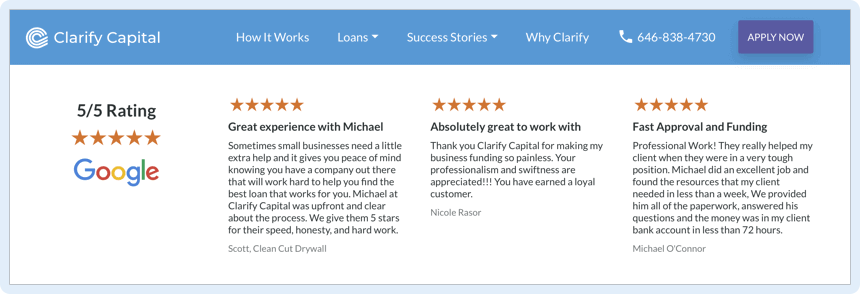
But don't stop there!
Quote positive comments in your email signature, on your business cards and in any other marketing materials you produce. This builds trust and shows your customers that you're the real deal.
17. Create a Sense of Urgency
FOMO—the fear of missing out—is a terrific motivator to get people to commit to a sale.
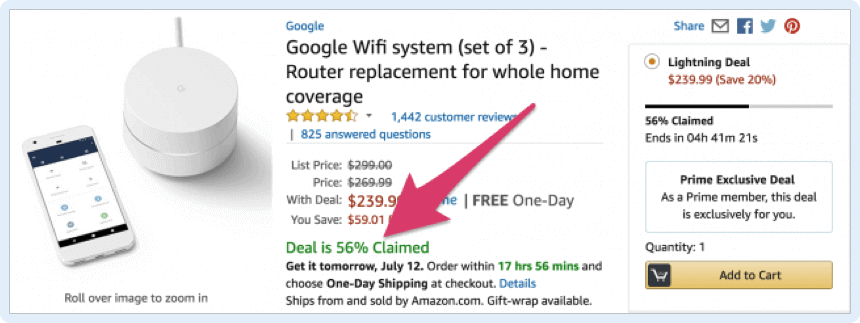
There are several ways to take advantage of FOMO when it comes to your business:
- Produce merchandise in limited quantities
- Display the number of items still available on your sales page
- Create "limited time offers"
- Add countdown clocks to highlight deadlines for sales
- Offer a signup for exclusive offers to a select few
Anything you can do to make your customers feel like they could miss out on a great deal will create FOMO and prompt customers to act—and that will get you more sales.

Nishank Khanna
Chief Marketing Officer
Nishank is a serial entrepreneur with over 20 years of digital marketing experience. He has founded six profitable businesses, two of which have been acquired. He's a data-driven marketer fueled by his passion to help people solve problems and has led product teams throughout his career. More about the Clarify team →
Related Posts





